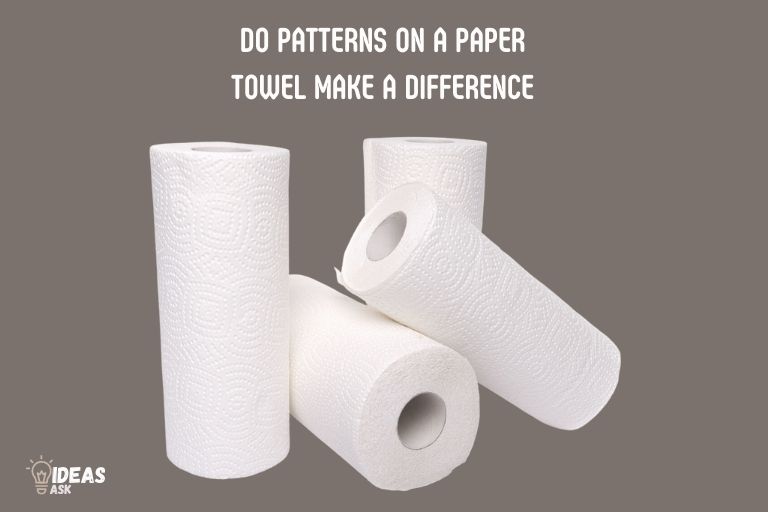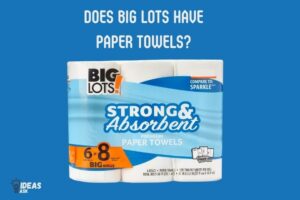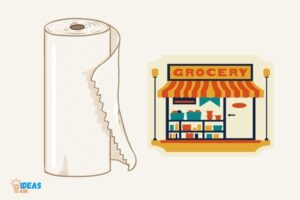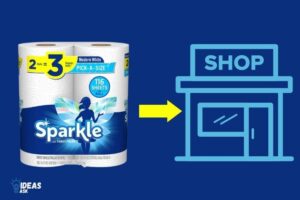Do Patterns on a Paper Towel Make a Difference? Yes!
Yes, patterns on a paper towel do make a difference in terms of absorbency, strength, and durability.
The pattern can affect the texture and surface of the towel, which in turn affects its ability to pick up liquid and hold together under pressure.
A pattern with deep crevices or indentations may enhance absorbency because it creates more surface area for the liquid to cling to.
But A design with larger, uniform perforations may make the towel weaker and more prone to tearing. When choosing a paper towel, it’s important to consider the pattern and how it will affect its performance.
A high-quality towel with a well-designed pattern can make all the difference in cleaning up spills and messes effectively.

Key Takeaway
Understanding Patterns of Paper Towels
What is paper towel pattern?
A paper towel pattern refers to the design or texture imprinted on a paper towel sheet.
These patterns are commonly embossed onto the paper during the manufacturing process and serve several practical and aesthetic purposes.
They typically consist of a repeating design that enhances the towel’s absorbency and strength.
Common Types of Patterns
- Floral Patterns: These feature flower designs and are often associated with aesthetics and a pleasant appearance.
- Geometric Patterns: Typically consist of shapes and lines, offering a clean and modern look.
- Embossed Patterns: Raised patterns that can enhance the texture of the paper towel for improved cleaning.
- Custom Branding: Some paper towels feature custom patterns to align with a brand’s visual identity.
The Impact of Patterns on Paper Towels
User Perception and Satisfaction
- Visual Appeal and User Experience: Discuss how the visual appeal of patterns on paper towels can significantly impact user perception and satisfaction. Aesthetically pleasing patterns may lead to a more positive experience for consumers, while unattractive or confusing patterns could have the opposite effect.
- Consumer Preferences: Highlight the importance of understanding consumer preferences when it comes to paper towel patterns. Mention any relevant studies or surveys that have explored user opinions and choices based on patterns.
- Psychological Aspects: Explore the psychological aspects of pattern perception, such as how certain patterns might evoke feelings of cleanliness, comfort, or luxury, influencing user satisfaction.
Absorption and Cleaning Efficiency
- Impact of Pattern Design: Examine how the specific design and texture of patterns can influence the absorption and cleaning efficiency of paper towels. Patterns with embossed textures, for example, can provide additional surface area for enhanced absorption.
- Pattern Materials: Discuss how the choice of materials in the pattern design can affect absorption. Some patterns may utilize materials that enhance liquid and debris retention, leading to more effective cleaning.
- Scientific Principles: Dive into the science behind how patterns can either enhance or hinder cleaning performance. Explain concepts like capillarity and surface tension and how they relate to the efficiency of paper towels with different patterns.
Environmental Considerations and Sustainability
- Environmental Impact: Analyze the environmental impact of various paper towel patterns, with a focus on the materials used in production and the waste generated. Patterns that involve eco-friendly materials or manufacturing processes can have a significantly lower environmental footprint.
- Sustainable Pattern Design: Discuss sustainable pattern design approaches, such as the use of recycled or biodegradable materials, to minimize the ecological impact of paper towels.
- Importance of Eco-Conscious Choices: Highlight the significance of making environmentally conscious pattern choices in paper towel manufacturing. Explain how this aligns with broader sustainability goals and consumer demand for eco-friendly products.
Patterns Impact in Aesthetics and Branding
- Branding and Marketing: Discuss how pattern selection is intertwined with branding and marketing efforts. Companies often use distinct patterns to create a unique and recognizable identity for their paper towels, which can lead to brand loyalty and increased market share.
- Examples of Brand Alignment: Provide examples of successful brand alignment through pattern design. For instance, a company known for its eco-friendly products might use nature-inspired patterns to reinforce its brand identity.
Explanation Of How Patterns Work On A Paper Towel
Have you noticed patterns on the paper towels you use at home? Ever wondered why they were there or if they really make a difference?
Let’s dive into the basics of how patterns on paper towels work and understand the purpose behind them.
The Basics Of How Patterns On Paper Towel Work
- Paper towels are made of cellulose fibers that create a network of tiny channels. These channels help to absorb water and other liquids from surfaces.
- However, without any patterns, the liquid would spread out and make it harder to control the cleanup. The patterns added to paper towels create what is called capillary action.
- This means that materials, such as water and oils, are attracted to the paper fibers through the channels, moving the liquids quickly and efficiently across the surface of the paper towel.
Explanation Of The Purpose Of The Patterns
- Enhanced absorbency: The patterns on the paper towel help to increase its absorbency by creating more channels for the liquid to flow and by wicking the liquid across the surface.
- Improved strength: The patterns on paper towels add strength, so they don’t break or fall apart, even when wet.
- Better cleaning: The patterns on paper towels create a grippy texture, which helps to loosen dirt and grime while cleaning surfaces.
- Better visual appeal: Patterns on paper towels help to improve the visual appeal of the product. Manufacturers use a variety of patterns to give the customer a more aesthetically pleasing product that stands out on store shelves.
Patterns on a paper towel do make a difference. They improve the absorbency and strength, provide better cleaning, and enhance the visual appeal of the product.
The next time you go to use a paper towel, take a closer look at the patterns on it, and appreciate the work that goes into creating a perfect clean up.
The Advantages Of Patterns On A Paper Towel
Have you ever wondered why paper towels have patterns? Believe it or not, patterns are not just for aesthetics purposes.
We will discuss how patterns make paper towels more absorbent and how they can influence texture.
Patterns Make Paper Towels More Absorbent
- Paper towels are designed to be absorbent, and the patterns on them help to enhance their absorbency.
- The diamond or honeycomb patterns on paper towels create small pockets that hold water and other liquids more effectively, allowing them to be absorbed more quickly and efficiently.
- Without patterns, the liquid would spread out over the surface of the paper towel, making it harder to absorb the full quantity of liquid.
Patterns Can Influence Texture
- Patterns on paper towels can also influence the texture of the paper towel.
- The embossed pattern on each sheet of paper towel helps to create more spaces and pockets that can hold the liquid and make the towel more absorbent.
- Different patterns and embossing can also provide specific textures, such as more stiffness for tougher messes or softness for sensitive surfaces.
- The texture of a particular pattern can also influence the strength of the towel. A paper towel with a more robust texture is less likely to tear while cleaning, making it a better choice for tough messes.
So, the next time you reach for a paper towel, take a moment to appreciate the pattern on it. The pattern is not just for decoration, but it also serves a practical purpose in enhancing its absorbency and texture.
Moreover, it provides consumers with an array of options to choose from depending on their requirements.
Conclusion
By considering all the evidence, it seems clear that patterns on a paper towel surely do make a difference in their functionality.
Different types of patterns have different qualities that may suit different needs, whether it be absorbency, softness, thickness, or durability.
Furthermore, the type of material used and the processes involved in making the paper towel can also impact its effectiveness.
It is important to understand the qualities of different patterns and their corresponding advantages to inform our paper towel purchasing decisions.
Considering the amount of paper towel usage worldwide, even small differences in quality or effectiveness can make a significant impact.
By choosing the right patterned paper towels, we can not only save time and money, but also contribute to a more sustainable future by reducing waste.
So make an informed purchase decision next time you shop for paper towels and let the pattern work its magic!





